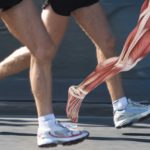Every program at PHASE IV is based in science and personalization and focuses on optimizing one’s metabolism. It doesn’t matter if you’re looking to PR on your next race, lose 20 lbs or just improve your overall health. Everyone needs a healthy metabolism to maintain optimal health.
Authors Robert Forster, P.T., and Roy M. Wallack go into depth in their book Healthy Running Step by Step explaining why it’s important to improve your metabolic fitness and how to do it in a safe and effective way, avoiding injury and getting into peak fitness. Check out the excerpt below from his book and don’t forget to pick up a copy!
Excerpt from Healthy Running Step by Step, Chapter 4: Periodization Training
Metabolic fitness refers to how efficiently your body turns food into energy for both exercise and daily activities.
Metabolic fitness has made the terms cardio and cardiovascular fitness antiquated because we now know that the majority of the improvements in endurance that come from aerobic exercise occur in the muscle cells—not the heart (cardio), blood vessels (vascular), and lungs, in which improvements in performance occur relatively quickly and then stop.
Within the muscles, however, the room for improved performance is more profound and takes longer to achieve. Yet this is where the vast benefits of training are realized. The foundation of all fitness, whether your goal is to compete in the 100-meter dash or the marathon, is metabolic efficiency.
Metabolic efficiency is defined as the ability to use more fat for energy at any intensity. It doesn’t matter whether you’re an Olympic athlete or a beginner age-grouper; the first order of business is developing your aerobic engine. This is the basis of Bob Kersee’s gold medal-winning success over eight Olympics; even his sprinters and jumpers first develop a huge aerobic foundation. Base training upgrades the aerobic capacity of the cells by forcing (stimulating) your body to make three key adaptations, or improvements: increases in mitochondria, vascularization, and glycogen storage.
Book Summary:
Healthy Running Step by Step will help runners of all ages and abilities understand the science behind every aspect of running: training program design, running technique, nutrition, recovery, flexibility and strength training and why running injuries occur, how to prevent them, and how to speed up recovery. Injuries plague the majority of runners, wrecking training plans and cutting running careers short by decades, but they are not inevitable. Authors Robert Forster, P.T., and Roy M. Wallack explain that nearly all running injuries can be rehabilitated quicker and even avoided altogether with the right training, strengthening, stretching, running form, and diet strategy.
Drawing from Forster’s three decades of training and treating Olympic athletes and more than 10,000 runners at his award-winning Santa Monica, California physical therapy and high-performance centers, this book emphasizes that better performance is inextricably bound to injury reduction and that a comprehensive, science-based training plan with built-in anti-injury “insurance” must include these crucial elements: Periodization training, Proper technique and footwear, Nutrition, Posture and flexibility, and Strength training. This book also includes detailed, step-by-step rehabilitation matrixes for the five most common running injuries: IT band syndrome, Achilles tendonitis, shin splints, plantar fasciitis, and hamstring injuries. Using these unique matrixes as your guide, you’ll recover from injuries more quickly and understand what you need to do to prevent their reoccurrence.

Pick up your copy of Healthy Running Step by Step today!







